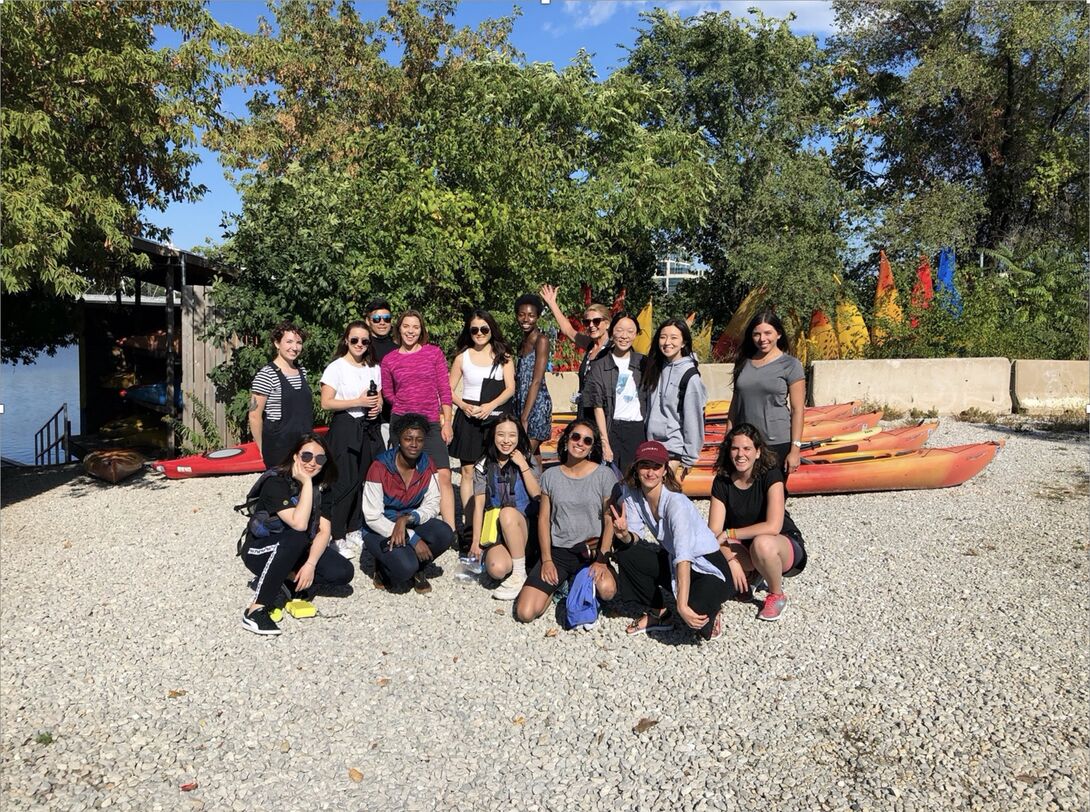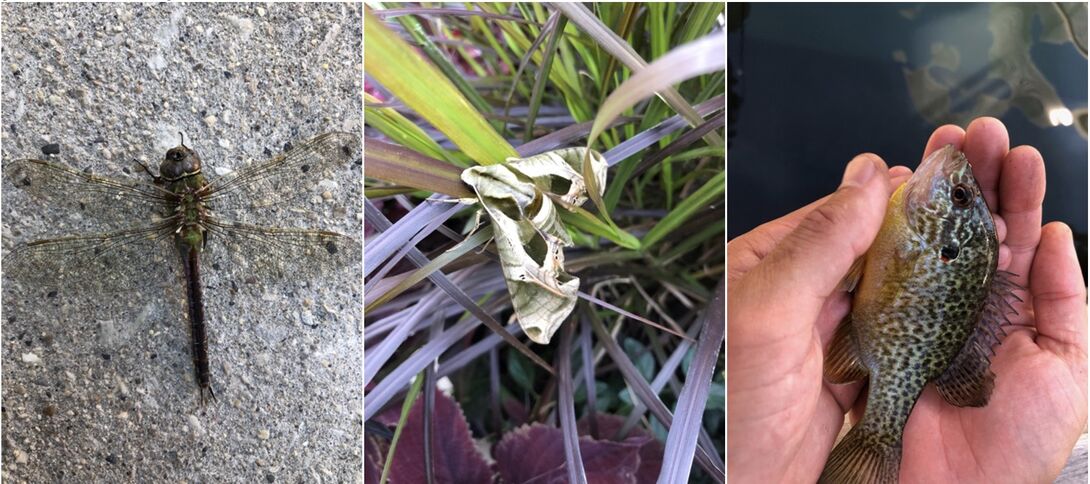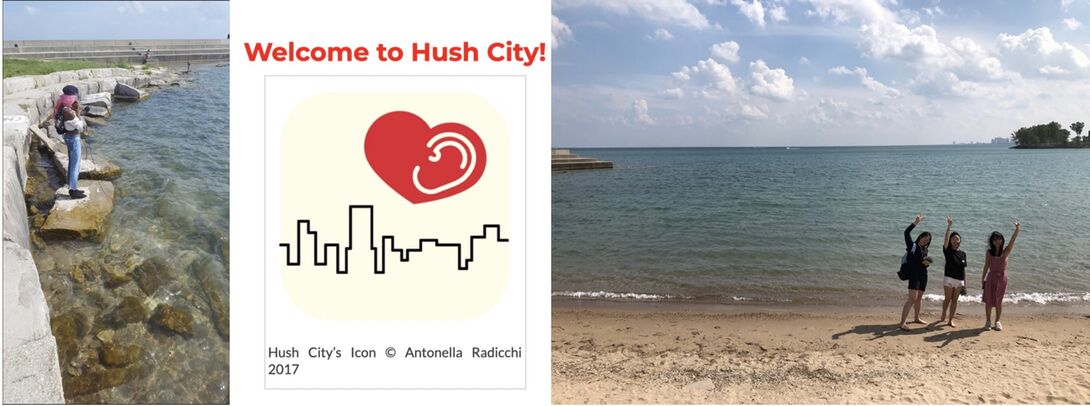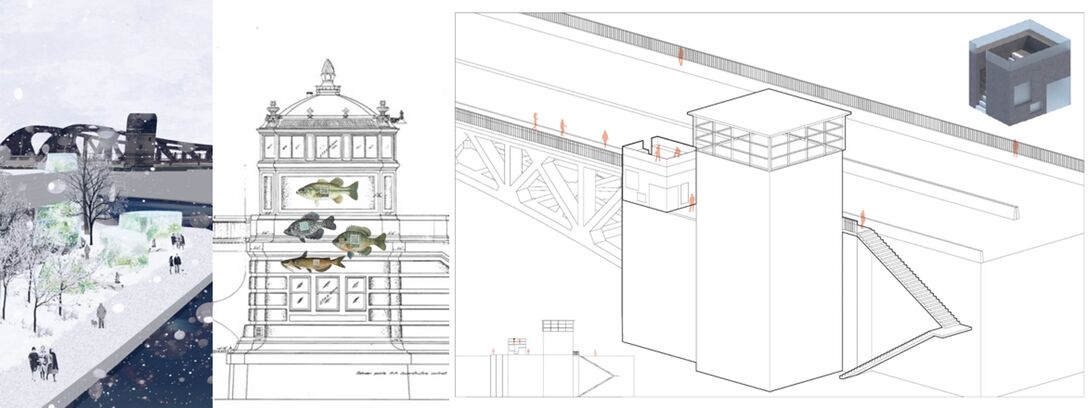
Eco Design: Sound Mapping and Tenderhouse Activations

Eco Design Sound Mapping and Tenderhouse Activations 19-20
In 2019, SAIC’s Eco Design partnered with two organizations, Hush City, Dr. Antonella Radicchio, Berlin Sound Consultant, and The Tenderhouse Project, Mejay Gula, to activate new listening and public engagement opportunities along the waterways of Chicago reimagining a more resilient world. Artists, Art Education, Designers, and Architecture students work as citizen scientists observing, listening, recording, and connecting with the city through its freshwater resource- The Great Lakes. Students take in field recordings at Northerly Island, Goose Island, and along the Riverwalk seeking places of repose in an ever increasingly loud and noisy city. They make contact and interact with non-human biodiversity of life. Experiencing a Chicago Architecture Biennial Partner Eco Cruise on the Main, North and South Branches of the Chicago River gives exposure to Chicago’s history, its present water use, and abuse, and its potential future as a global freshwater leader. During the course of the semester students read historical environmental texts, research current institutions and non-profits activating change around the world, and watch key documentaries on Climate Accords, Water Privatization, the state of our rivers, and pollution of plastic in the ocean.

Northerly Island Soundscape Mapping Seeks Quiet Zones in the City
Dr. Antonella Radicchio, EU Sound Consultant to Berlin, introduced her innovative Hush City App, free and easy to use, to Eco Design students who captured moments of repose and listening on Northerly Island. Eco Sensing a City involves listening to its urban sounds, but also finding places where machines are not primary and other sounds of biophony and geophony are soothing.

Most students had never ventured to this quiet beachfront with views of Chicago’s beautiful skyline. Some biked, others bussed, and some walked. The goal was to record places in the city that were calming and captured happy human emotions with backgrounds of biophonic and geophonic sounds while offering views of nature.
McCormick Bridge and Chicago History Museum
Students tour the McCormick Bridge and Chicago River History Museum learning about the use and misuse of Chicago’s waterways. Opened in 2006, The Museum serves as an introduction to the many bridge and tender house designs that served the fluid highway of the river over the decades. Students hear from Mejay Gula’s research on the underutilization of Chicago’s bridge houses and begin to think of creative ways to occupy them.

Chicago River History Museum
Eric Leonardson, President of the Midwest Society of Acoustic Ecology, led a Chicago Riverwalk Sound Walk after students toured the History Museum of the stages of the Chicago River from indigenous people, first settlers, industrial revolution, development of the canal, rail lines, the Chicago Fire and the 1893 rebuilding into the world fair. The students learn about the reversal of the river due to intake of polluted water one, then two, then from four miles out. On a sunny September Day, the Riverwalk was activated with motorcrafts, architecture cruises, Michigan Avenue traffic, tourists, and citizens. The majority of sounds were anthrophonic and human. Occasionally a bird, a jumping fish, a cool breeze sounded and contributed to the biodiversity of Chicago’s busy city life.


Tenderhouse Proposals by Eco Design Students F19
Students created listening apps for river life and river pollution checking apps for the public to listen and learn at two of the tender houses on the Main Branch. They created sound emporiums, or listening sites, for people to experience the world below, on, and above, the Chicago River. They also create urban greenhouses and vertical farms.

ECO DESIGN FALL of 2020 continued to explore water issues and advocacy for the importance of freshwater in the cultural and environmental diversity in cities as a necessity for sustaining life.
Students created Humans and Nature videos discovering that while people need nature to survive, nature probably doesn’t need people. They pursued water knowledge about the health of the water and of the Great Lakes reading books and reports on water and watching key water films. The class debated the National Geographic debate between the optimist’s view of saving the world by 1975 and the pessimists view of losing it. Final projects included a proposed Water Information NEWSCAST on the outside of the ENCLAVE Cooler building on State Street and Nature vs. Built Environment Bingo Cards for future Eco Cruises. Students leave as informed citizens and freshwater advocates.
